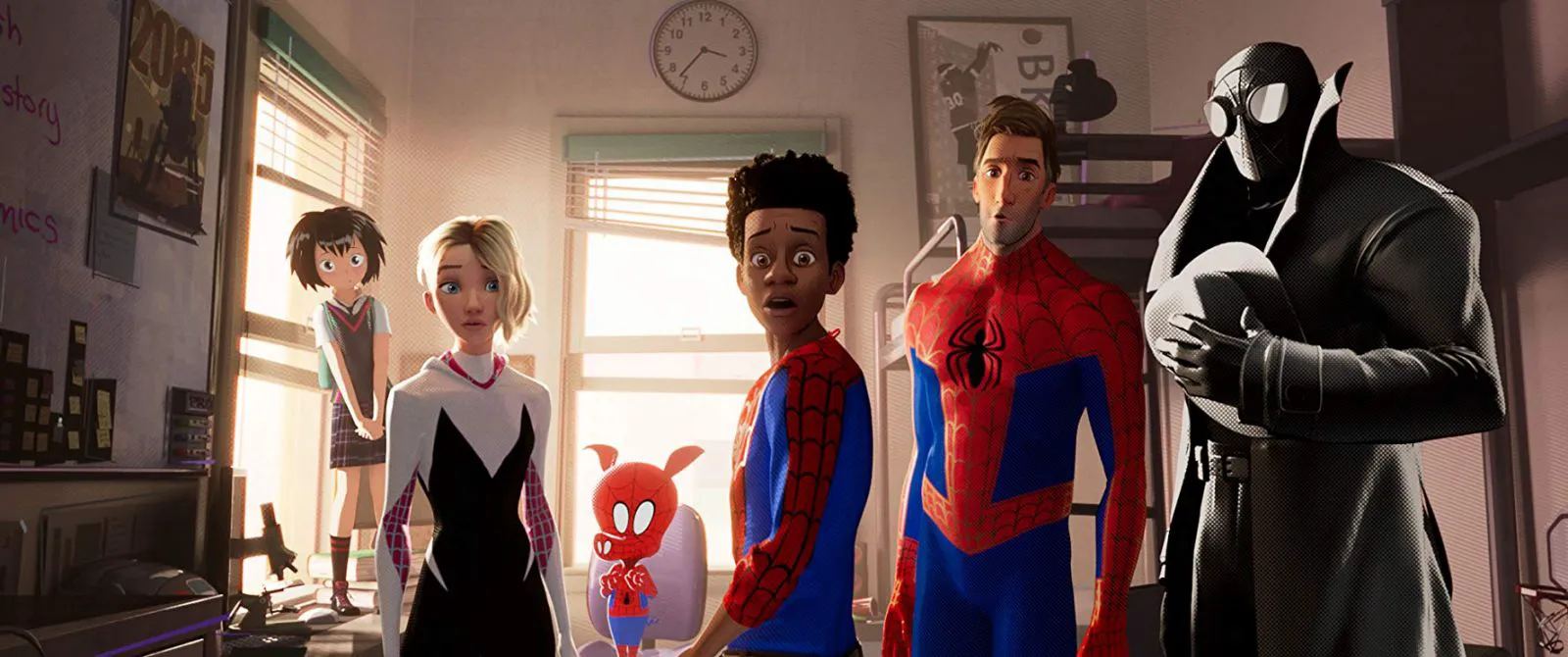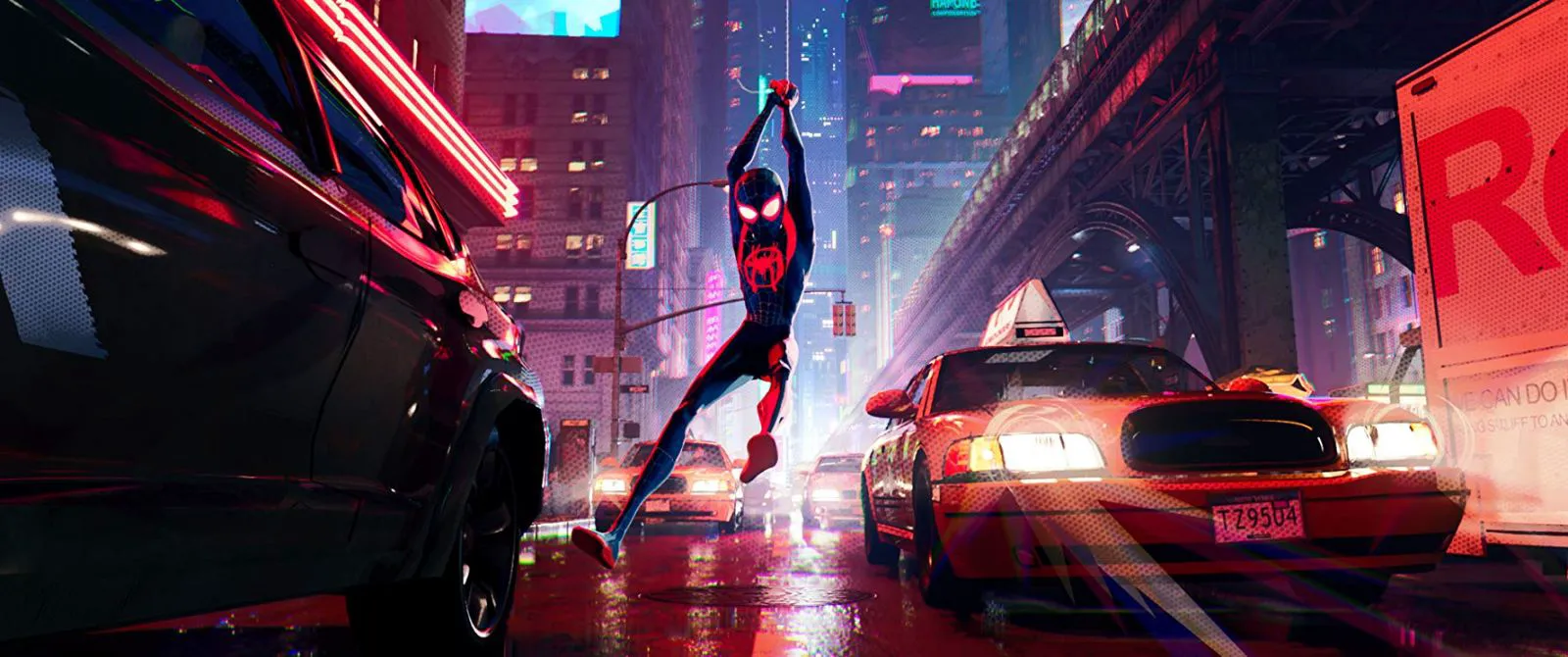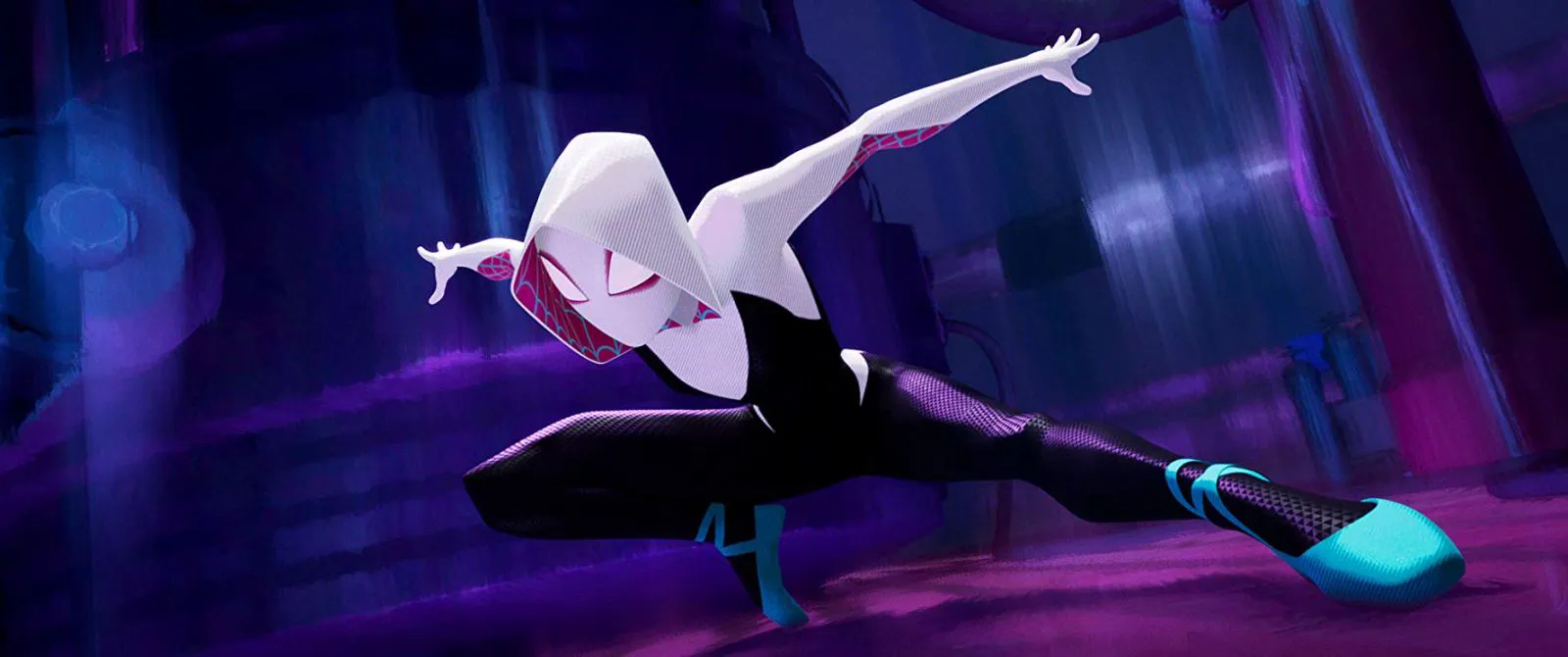A Fresh Spin on a Familiar Hero: The Best Thing to Happen to Spider-Man Since Raimi’s Trilogy (or Maybe Ever)
Miles Morales, a gifted Brooklyn high schooler, gets transferred to a new elite school based on his test scores. His parents, especially his police officer father, are thrilled, but Miles isn’t so sure: he was much more comfortable in his old neighborhood. He increasingly sneaks away from campus to hang out with his less-than-reputable uncle Aaron, and together they go graffitiing. During one of these outings, Miles is bitten by a radioactive spider, and then… well, you know the rest.

Meanwhile, the criminal kingpin Wilson Fisk, aka Kingpin, is building a special device that threatens to tear the fabric of reality and connect different dimensions. The reason he’s doing this is disarmingly simple: Fisk just wants to bring back the family he lost in this reality. Kingpin doesn’t even want to think about the terrifying consequences that could result from disrupting the space-time continuum. During a fight with the local Spider-Man, Peter Parker accidentally gets caught in the beam emitted by this device, and several Spider-People from different dimensions end up in Miles’ reality: a tired, unshaven Peter Parker from, apparently, our reality (he’s the only one who knows what Comic-Con is), Spider-Gwen, Spider-Man Noir, the anime-style Peni Parker, and the “cartoonish” Spider-Ham. Together, they must stop Fisk and prevent him from activating the device a second time—otherwise, all realities will be doomed.

Sony’s Animation Renaissance?
In recent years, it’s been hard to mention Sony Pictures Animation without a sarcastic smirk. After all, these are the people who thought it was a good idea to make a movie about emojis, and they’ve been keeping the excellent animator Genndy Tartakovsky in creative servitude for six years now—no matter how you look at it, the track record isn’t impressive. Their decision to launch yet another Spider-Man franchise—considering that the last iteration of the character, let’s remember, came out just a year ago—seemed like just another failed idea in a series of them. To paraphrase a well-known rhetorical question: what could possibly go right?

The Lord and Miller Effect
But whether it was the competition with Disney that got the gears turning at Sony, or whether some smart person accidentally wandered into their office, they followed up all their failed ideas with one that was absolutely brilliant: bringing in Phil Lord and Chris Miller, the leading postmodernists of modern animation, for another Spider-Man reboot. These are the same people who managed to make a great movie first out of a comedic remake of an '80s TV series that everyone had long forgotten about, and then out of an advertisement for a very famous construction toy.

Unlike their competitors at Disney (yes, we all remember “Solo: A Star Wars Story”), Sony didn’t stifle the duo or complain that they were, you know, too creative. The result is predictable: Lord and Miller have created something that can best be described as a “spider” version of “The Lego Movie.” But while the latter was a love letter to more or less the entire mass culture, “Into the Spider-Verse” focuses only on that narrow part of it that is associated with the friendly neighborhood hero. The result is the ultimate Spider-Man movie—one that takes into account the experience of all its predecessors and interprets it in an incredibly original way.

A Meta-Narrative Masterpiece
The film doesn’t try to pretend that no Spider-Man stories existed before it, as both Marc Webb’s version and the Marvel film do. On the contrary, it openly jokes about its position (“Okay, let’s do this one last time…”), winks at the audience with references to the Raimi trilogy, other comics, and even memes—in general, everything that the hero has left behind in half a century of his existence. It can be compared to something like “Deadpool,” but Lord and Miller’s approach is much wittier, more subtle, and, frankly, just more interesting than Ryan Reynolds’. For them, playing with postmodernism is not just a way to be sarcastic and joke about breaking the fourth wall for the hundredth time. It’s also an attempt to fit the entire vast cultural layer associated with the guy in the red-and-blue tights into some kind of absolute, to bring all the plots and endless multiverses under a common denominator.

The attempt is more than successful—it’s hard to imagine how, after “Spider-Man: Into the Spider-Verse,” you can seriously watch another story about Peter Parker learning responsibility, losing loved ones, and doing other things that he has already done hundreds of times before. Of course, Lord and Miller are not without sin (or rather, just Lord, he wrote the script alone), and they have some “mandatory” moments in their dramaturgy—no matter how hard the authors try, they never managed to completely move away from the superhero origin template. A couple of scenes feel a little strained, as if in the midst of a burst of creative ecstasy, someone from the studio came to Phil Lord and said: “This is all well and good, but we still need to reveal the hero here!” But even here, the film makes a kind of knight’s move: it puts not Parker, but another Spider-Man, Miles Morales, at the center of the story. And even the standard story of finding oneself and finding harmony with loved ones is filled with new details, relationships, and conflicts—it’s вроде the same song, but played quite differently. In general, this “same thing” is masterfully played out in the film, directly stating that the story of Spider-Man is universal in principle.
Pure Entertainment
However, enough about postmodernism, dramaturgy, and other boring things—or it may seem that we are not discussing a new “Spider-Man” here, but some arthouse indie film or something even worse. All these meta-meanings and clever references would mean little if “Into the Spider-Verse” didn’t work as a purely entertaining film. And it works, and how: it’s an inventive, funny, and incredibly coolly staged film—possibly the coolest of the year in general (and not only in animation). While other blockbusters are trying to make the picture “down-to-earth,” the trio of directors Persichetti-Ramsey-Rothman are having a blast: their camera does not obey the laws of physics, the comic book stylization perfectly complements the “universal” spirit of the story, and the color scheme closer to the end explodes with such an acid palette that a little more, and it seems, the film will turn into an epileptic’s nightmare. But no matter what visual chaos is happening on the screen, it is always chaos that is skillfully controlled, extremely clear, and, yes, infinitely beautiful. So much so that after leaving the cinema, you will hardly have anything in mind except empty enthusiastic epithets. I, honestly, didn’t.